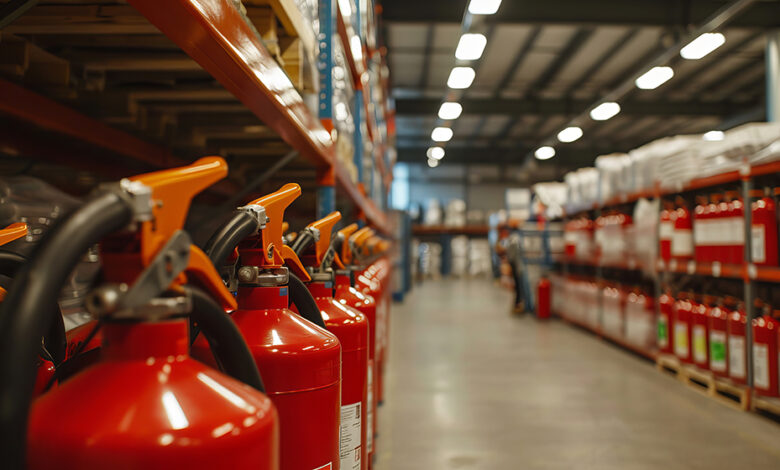Choosing the Right Extinguisher for Your Aircraft

Fire safety is more critical in aviation than almost anywhere else, as it makes the difference between a minor mishap and a catastrophe. Fire extinguisher selection to be used within an aircraft is a very important process that should be taken carefully. There are so many different fire risks and extinguisher varieties out there, and knowing the details about each can help you conclude. Following are a few factors that can highlight how to select the correct extinguisher for your aircraft.
1. Understand the Types of Fires Common in Aircraft
The plane fires are categorized in line with the material or substance that has caught fire and each kind needs a particular kind of extinguisher. Class A fires are with materials that burn, such as paper, fabric, and the like; Class B fires with flammable liquids, for instance, jet fuel and oil; and Class C fires with electrical equipment. In aviation operations, the extinguishers designed for B and C classes are critical in operations because of the common use of flammable liquids and electrical parts.
One should keep an extinguisher clean and maintained to guarantee that it will be there when it is needed. Training in the use of such extinguishers augments safety and efficiency and gives mastery of circumstances during an emergency.
See also: Nutrition and Diet in Aged Care Homes: What’s on the Menu?
2. Evaluate Extinguisher Types and Their Suitability
Different fires are fought with different extinguishing agents, all of which have different advantages under different circumstances. Halon is effective for Class B and C fires and, because of this, is ideal for use in aircraft. A great benefit of these extinguishers is that they are able to put out fires, leaving no residue, which makes them excellent in places where delicate equipment may be harmed. CO2 extinguishers, which, though designed for electrical fires, displace oxygen and suffocate the fire, aren’t as effective in well-ventilated areas.
As dry chemical extinguishers are versatile but leave a residue that can damage sensitive components, especially electrical components, they can be used everywhere except in electrical systems. Therefore, an aircraft designed and operated under different conditions will require a different extinction. Halons, especially as part of a Halon-based aircraft fire extinguisher, are preferred for their effective fire suppression and little if any, impact on adjacent materials.
3. Consider Size, Weight, and Accessibility
The size and weight of the extinguisher are essential factors in making a decision; however, the quantity of available space on a compact airplane is significantly limited. Small and portable extinguishers are way easier to use during an emergency, and they also enable proper storage without consuming a lot of space. Correct positioning is equally crucial in a matter of extinguisher placement, which should allow easy access for both the crew and the passengers. Moreover, the operation of the extinguisher should not be complicated, even under conditions of high pressure. The extinguisher must meet the aviation regulatory standards for size and mounting method when placed in an aircraft, but its size should fit in the layout of the aircraft. It is also required on a frequent basis to check and do maintenance works so that the extinguisher will be handy and working properly when called to performance.
4. Maintenance and Compliance with Regulations
Fire extinguishers installed in the aircraft should be aviation-type and must also be reconditioned periodically to make certain that they are in good working condition. Another important consideration is certification, which must be FAA or an equivalent aviation authority-approved type of extinguisher rating. Other main practices include the general inspection and services where pressure is checked, expiration dates and basic visible defects are spotted. Furthermore, the selection of extinguishers, which can be refilled or recharged also allows increasing their lifespan. Flammable material will not only ensure that the extinguisher is going to work at the time of the fire but also meet the requirements of aviation safety regulations to protect the people and the planes on board.
Conclusion
Selecting the optimum fire extinguisher for your aircraft is about knowing fire hazards, the types of extinguishers, as well as size, weight, and service requirements. A carefully selected extinguisher really makes the flight safer and adds confidence to the drive. The choice of correct equipment for your aircraft and choice of correct maintenance patterns would guarantee responses to any fire-related purposes, thereby ensuring the safety of passengers and crew.





